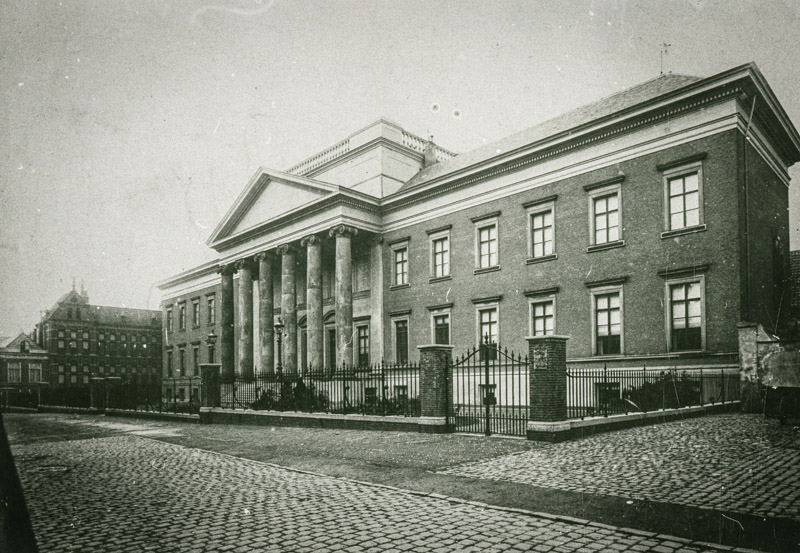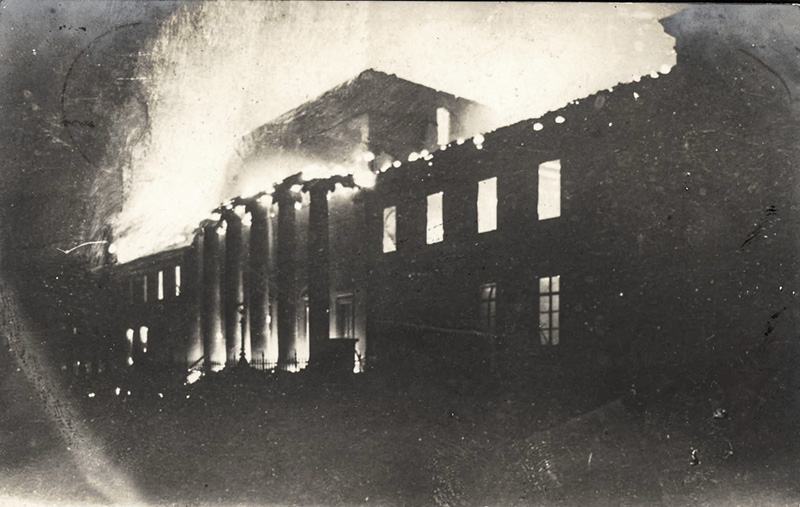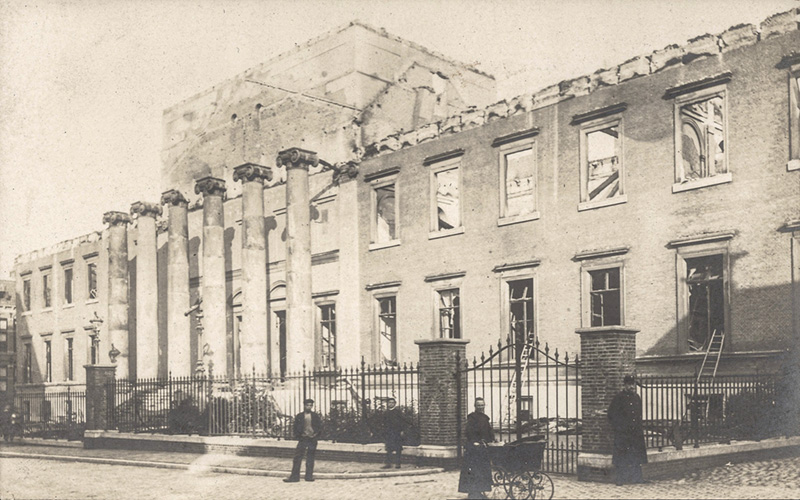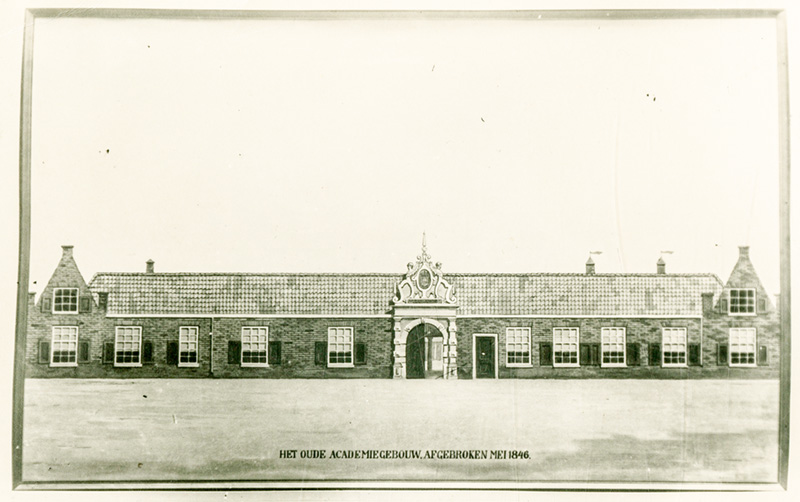waybackmachine
Academy building A ‘poorly designed barn’

Did you think the beautiful, classical Academy building at the Broerstraat was old? Perhaps something that was built at the time the Groningen university was founded?
Alas. It might look old, but it only opened in 1909, after a devastating fire had destroyed the previous version in 1906. Since the classics were particularly popular back then, the UG’s curators went for a Renaissance Revival-style building: it looked old, but it was all fake.
Perhaps the fire had been a blessing in disguise, though. Because to be honest, no one had been particularly happy with the previous building. It was dark, cramped, and its acoustics were abysmal.
But when the Academy building needed replacing halfway through the nineteenth century because it was ‘in ruins’ and a ‘poorly designed barn’, the money for something nicer simply wasn’t there. In fact, the government at the time was considering shutting down several universities, and Groningen, which didn’t even have proper accommodation – was at the top of the list.
A free building
Fortunately, the city council came up with a clever plan. They would pay for a new Academy building and give it to the state after it was finished. Surely a free building would be enough to make them reconsider shutting the university down?
The tactic worked and the new building was opened in 1850: a neoclassical building fronted by Ionian pillars, separate lecture halls for each faculty, rooms for the curators, and on the entire second floor, the Museum for Natural History. The gate in the photo was built in 1901. It was meant to keep out street kids from the neighbourhood who would climb the window frames to disrupt classes.

Unfortunately, the building only lasted fifty-six years. The building, which was dark and cramped and built for a song, was constantly under construction and being painted, which is ultimately what led to the big fire in 1906.
Student banner
Painters cause a fire when burning away old layers of paint. The fire spread to the attic, where the floor was covered in sawdust because of a leaky roof. One floor below, the fire encountered taxidermied animals and specimens in formaldehyde and all bets were off. To make things worse, the fire brigade didn’t show up for two hours and the fire hoses lacked pressure.
The only thing that president and curator Geertsema could do was drag the archives, professors’ portraits, and the student banner from 1665 outside.

This is all that was left after the devastating fire: a ruin and six Ionian pillars. Inside, an oak cabinet with a few books and several phonetics instruments remained. The basement also survived, mainly because a granite floor had been installed on the ground floor the year before.
A year later, architect Vrijman used these foundations for a new Academy building. As one journalist put it, the new building looked like ‘something our forefathers might have envisioned the year they founded the Groningen university’.

This is the actual building from 1614.
In the seventeenth century, the university took up residence in the empty monastery of the Friars Minor in the Broerstraat. Across the street, there were two convents. The first Academy building was constructed in front of these convents, parallel to the Broerstraat. It was a single-storey building, forty metres wide.
Official announcements were put underneath the gate. The classrooms, or auditoriums, were located in the old convents behind the Academy building: one for the arts department and public book sales, one for the law department, and one for theology. The beadle lived in the front building, which even had a dungeon: the university was its own jurisdiction.
The monastery’s church, also in the Broerstraat, became the Academy church, where speeches and PhD ceremonies were held. It’s also where professors were buried. Ubbo Emmius was the first one in 1625. The old sacristy became a public dissection room.